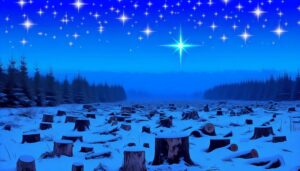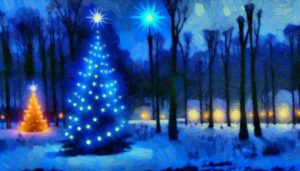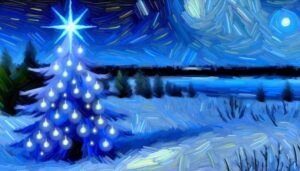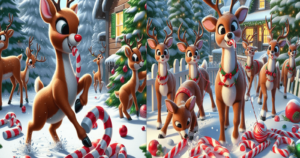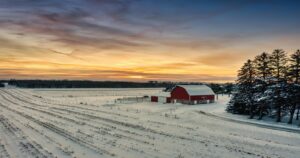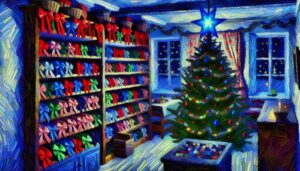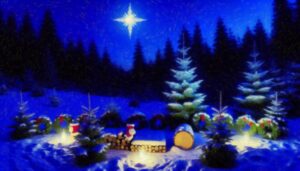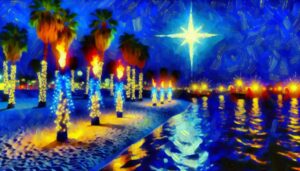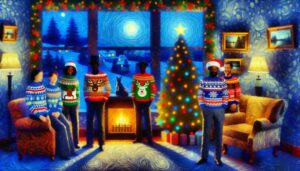Spruce needles sharp-pointed, square in shape, can be easily rolled between your fingers, Fir needles are softer, flat, resist rolling between your fingers. Additionally, spruce needles are affixed to small, stalk-like woody projections.
The choice between a spruce and a fir for a Christmas tree often comes down to personal preference, as both types of trees have their own unique characteristics.the spruce and the fir.
Each of these iconic evergreens brings its own unique charm and character to the holiday season. As we delve into their distinct features and qualities, we embark on a journey to uncover which tree might just be the ideal centerpiece for your festive celebrations.
The choice between a spruce and a fir for a Christmas tree often comes down to personal preference, as both types of trees have their own unique characteristics. Here are some key differences between the two.
Spruce vs. Fir Christmas Trees: Key Differences
A spruce is a tree belonging to the genus Picea. Spruce trees are impressive in size, typically reaching heights ranging from approximately 20 to 60 meters (about 60 to 200 feet) once they reach maturity. They are characterized by their whorled branches and distinctive conical shape.
What sets spruces apart from other members of the pine family are their needles, which are quadrangular in shape and attach individually to small, enduring peg-like structures known as pulvini or sterigmata on the branches. Additionally, their cones lack any protruding bracts and hang downward once they have been pollinated.
Identifying a spruce tree is straightforward; its evergreen needles, which are roughly quadrangular in shape, and particularly the pulvinus, are distinctive characteristics that make it easily recognizable.
| Spruce Tree | Fir Tree |
|---|---|
| Color: Blue-green or blue-gray | Color: Dark green to silvery-green |
| Needle Shape: Stiff, sharp | Needle Shape: Soft, flat |
| Density: Dense, symmetrical | Density: Dense, conical |
| Holds needles for 3-5 years | Excellent needle retention, up to 10 years |
| Mild fragrance | Stronger, pleasant fragrance |
| Good, but may drop needles indoors sooner | Excellent, lasts longer indoors |
| Branch Strength: Strong branches for heavy ornaments | Branch Strength: Strong but flexible branches |
| Needle Softness: Sharp needles | Needle Softness: Soft needles |
| Generally less expensive | Generally more expensive |

Spruce branch.
Exploring the Fir Tree
The fir trees are evergreen coniferous trees, belonging to the Pinaceae family of plants that have a genus count of 48-55 species. The fir tree looks like a Christmas tree. Fir is a specific species of tree. It has certain characteristics that distinguish it from other conifer trees.
Fir trees can be identified by their needle-like leaves that are always short, just a few inches in length. When the cones of fir trees develop, they break open and release their seeds. Firs are pyramid-shaped trees, which is why they are suitable as Christmas trees.
The leaves of fir trees are sharp and are medicinally beneficial for flu, cold, cough, muscle aches, and arthritis. The appreciation day of a fir tree is 18th June. The Douglas fir tree is useful in preventing soil erosion and is also used in commercial landscape designs.

Firs that grows in Upstate of New York

The Nordman Fir, scientifically known as Abies nordmanniana, stands out as the favored choice for a genuine Christmas tree. Its popularity arises not only from its minimal needle shedding but also its captivating appearance. Exhibiting a remarkably balanced form with robust, tiered branches, it boasts lush, dark green needles that are pleasantly soft to the touch. This makes it an excellent choice for children to adorn. Our selection exclusively comprises the most exceptional prime grade trees, harvested at the optimal time to guarantee utmost freshness.
Firs, classified under the genus Abies within the Pinaceae family, are enduring evergreen conifers. With around 48-56 existing species, they inhabit mountainous regions across a significant portion of North and Central America, Europe, Asia, and North Africa. In taxonomic terms, Abies is most closely kin to Cedrus.Firs can be identified from other genera in the pine family by their distinctive leaves.
Unlike some other trees, the needle-like leaves of a true fir grow directly from the branches. When these leaves fall, they leave noticeable circular scars due to their suction cup-like bases. The cones of firs are held upright on the branches, and even after the mature cone disintegrates, the spike like axis remains attached. Each of the slender, rounded cone scales holds two seeds with broad wings.

Spruce vs. Fir: Tips on Choosing the Perfect Christmas Tree
1. Measure your space: Before heading out to buy a tree, measure the height of the ceiling in the room where you plan to place it. You’ll want to ensure the tree fits comfortably without touching the ceiling.
2. Choose the right type of tree: Different species of Christmas trees have unique characteristics. Common types include fir, spruce, and pine. Each has its own scent, needle retention, and appearance. Fraser fir, Noble fir, and Douglas fir are popular choices for their good needle retention and pleasing aroma.
3. Check freshness: A fresh tree will last longer and be safer. Look for vibrant green needles that are hard to pull off and don’t break easily. Shake the tree gently; if a lot of needles fall off, the tree may not be as fresh.
4. Check for pests: Inspect the tree for any signs of pests or insects. You don’t want to bring unwanted visitors into your home. Look for egg cases, webs, or any other indications of pests.

5. Examine the trunk: Ensure that the tree’s trunk is straight and at least six inches long. A straight trunk makes it easier to secure the tree in a stand. The cut at the base should be fresh; if it’s dry or discolored, the tree may have difficulty absorbing water.
6. Consider needle retention: Some tree varieties are better at retaining their needles than others. If you want a tree that will stay fresh longer and shed fewer needles, consider varieties like Fraser fir or Noble fir.
7. Smell the tree: The scent of a Christmas tree is a big part of the holiday experience. Give the tree a gentle shake or touch to release its fragrance. Different species have different scents, so find one that you enjoy.
8. Check for straightness: A tree with a straight trunk is easier to set up and will likely fit better in your space. It also makes decorating and positioning ornaments more manageable.
9. Think about tree density: Consider the spacing between branches. A tree with evenly spaced branches will provide more room for ornaments and decorations.
10. Ask about sustainability: If possible, inquire about the source of the trees and whether they were grown sustainably. Some tree farms adhere to eco-friendly practices, and choosing a tree from such a source can be an environmentally conscious decision.
11. Bring the right tools: If you’re cutting your own tree, bring the necessary tools like a saw and gloves. Some tree farms provide these, but it’s good to be prepared.
Diseases of the spruce tree
1.fungus Rhizosphaera kalkhoffi-also known as Rhizosphaera needle cast or simply needle cast, is a fungal disease that affects various species of coniferous trees, particularly spruce trees
2.fungus Valsa kunzei-is a branch and stem canker.
Spruce vs Fir tree Health Benifits of spruce tree
Health benefits of Spruce tree
Spruce trees are valued for their natural reservoir of vitamin C. Captain Cook used spruce to craft a fermented beer that helped prevent scurvy during maritime expeditions. In Finland, tender spruce buds are used as a spice or to make syrup. Spruce needles can be consumed or steeped into tea for vitamin C, and they also hold water, providing hydration in survival scenarios.
Ornamentally, spruces are cherished for their evergreen, symmetrical, narrow-conic growth, making species like Picea abies and P. omorika popular as Christmas trees. Their distinctive form often inspires artificial Christmas tree designs.
Health Benefits of Fir Trees
Aromatherapy and Stress Reduction:
- Fir tree essential oils, particularly from balsam fir (Abies balsamea), are used in aromatherapy for their calming and stress-relieving properties.
- Inhaling fir oil aroma may promote relaxation and alleviate anxiety.
Respiratory Health:
- Essential oils from fir trees may help open up airways, benefiting individuals with respiratory conditions like asthma or bronchitis.
Antimicrobial Properties:
- Compounds in fir trees have shown antimicrobial properties, which may help combat certain bacteria, viruses, and fungi.
- These properties complement but do not replace proper medical treatment for infections.
Pain Relief and Anti-Inflammatory Effects:
- Fir tree extracts may have analgesic and anti-inflammatory properties, potentially aiding in managing conditions like arthritis.
Boosting Immune Function:
- Fir needles are rich in vitamin C, which can boost the immune system.
- Consuming fir needles or extracts might contribute to overall immune health.
Rich in Antioxidants:
- Fir needles contain antioxidants that combat oxidative stress and reduce free radical damage, potentially preventing chronic diseases.
Topical Use for Skin Conditions:
- Fir tree extracts are used in creams and ointments for treating skin conditions like eczema, psoriasis, and acne, due to their anti-inflammatory and antimicrobial properties.
Aid in Wound Healing:
- Antimicrobial properties of fir tree extracts may help prevent infections in wounds and support natural healing.
Antioxidant-Rich Tea:
- Tea made from fir needles is believed to be rich in vitamin C and antioxidants, providing a natural way to incorporate these health benefits into your diet.
Mood and Well-being:
- Spending time in forests with fir trees, known as “forest bathing” or “shinrin-yoku,” is associated with reduced stress, improved mood, and a greater sense of well-being.
Fir trees offer several potential health benefits through their essential oils, needle extracts, and the practice of spending time in nature. However, they should complement, not replace, conventional medical treatments.
Features & Appearance of Spruce Tree
1. Needle Type: Spruce trees have sharp, four-sided needles attached individually to the branches. They tend to be short and stiff, which can make them feel prickly to the touch.
2. Color: The needles of a spruce tree are typically dark green to bluish-green in color.

3. Fragrance: Spruce trees tend to have a strong, distinctive evergreen scent. This aroma is often associated with the holiday season.
4. Branches: Spruce branches tend to be more densely packed than fir branches, which can give the tree a fuller appearance.
5. Durability: Spruce trees may have slightly shorter needle retention compared to fir trees. This means they may shed needles a bit earlier if not properly cared for.
When selecting a spruce tree for Christmas, it’s important to be vigilant for signs of the eastern spruce budworm (Choristoneura fumiferana), a prominent pest of these trees.
How to recognize spruce and fir tree video
Types, uses of Spruce tree & Fir tree
Uses of Spruce Tree
Spruce stands as the primary material of choice for soundboards in numerous musical instruments such as guitars, mandolins, cellos, violins, pianos, and harps. The wood designated for this specific purpose is commonly known as tonewood.


Spruce is one of the most important woods for paper uses, as it has long wood fibres which bind together to make strong paper.
In the realm of acoustic guitars, both spruce and cedar find frequent application for the soundboard or top. The prevalent varieties of spruce employed for this purpose encompass Sitka, Engelmann, Adirondack, and European spruces.
Norway Spruce (Picea abies):
- Native to Northern, Central, and Eastern Europe.
- Known for its strong branches and traditional conical shape.
- Often used as Christmas trees and can grow up to 60 feet tall.

White Spruce (Picea glauca):
- Native to Canada and the northern United States.
- Features bluish-green needles and has good needle retention.
- Can grow up to 60 feet tall and is tolerant of cold climates.

Colorado Blue Spruce (Picea pungens):
- Native to the central and southern Rocky Mountains.
- Known for its striking blue-gray needles.
- Often used in landscaping and can grow up to 75 feet tall.

Sitka Spruce (Picea sitchensis):
- Native to the Pacific Northwest coast of North America.
- Known for its rapid growth and ability to thrive in moist, coastal environments.
- Can grow very tall, reaching up to 300 feet in the wild.

Black Spruce (Picea mariana):
- Native to North America, particularly in boggy and swampy areas.
- Features short, stiff needles and is often used for reforestation.
- Grows up to 50 feet tall.

Engelmann Spruce (Picea engelmannii):
- Native to the mountainous regions of western North America.
- Known for its slender trunk and dense foliage.
- Can grow up to 130 feet tall and is commonly used in high-altitude landscaping.

Serbian Spruce (Picea omorika):
- Native to the Balkan Peninsula.
- Features a narrow, conical shape with dark green needles and a silver underside.
- Often used in ornamental landscaping and can grow up to 100 feet tall.

Red Spruce (Picea rubens):
- Native to the northeastern United States and eastern Canada.
- Known for its reddish bark and small, cylindrical cones.
- Grows up to 80 feet tall and is used in the production of musical instruments.
Dwarf Alberta Spruce (Picea glauca ‘Conica’):

Dwarf Alberta Spruce trees are known for their compact, conical shape and dense, bright green needles. They are often used as ornamental trees in gardens and landscapes due to their manageable size and attractive form.
Types & Uses Of Fir Tree
1. Balsam Fir https://abavistwinterchristmas.com/christmas-tree-real-vs-fake/(Abies balsamea)

- Appearance: Dark green needles with a silvery underside, dense and conical shape.
- Scent: Strong, pleasant fragrance.
- Uses: Popular as a Christmas tree due to its needle retention and fragrance.
2. Fraser Fir (Abies fraseri)

- Appearance: Short, dark green needles with a silvery underside, conical shape.
- Scent: Strong fragrance similar to balsam fir.
- Uses: Highly prized as a Christmas tree for its excellent needle retention and pleasant scent.
3. Noble Fir (Abies procera)
- Appearance: Blue-green needles, upward curving branches, symmetrical shape.
- Scent: Mild, fresh fragrance.
- Uses: Valued as a Christmas tree and for its strong branches, which are ideal for heavy ornaments.
4. Nordmann Fir (Abies nordmanniana)
- Appearance: Dark green needles with a shiny appearance, dense and symmetrical shape.
- Scent: Subtle fragrance.
- Uses: Popular in Europe as a Christmas tree for its excellent needle retention and attractive appearance.
5. White Fir (Abies concolor)
- Appearance: Blue-green to silvery needles, conical shape.
- Scent: Citrus-like fragrance.
- Uses: Used as a Christmas tree and in landscaping for its unique color and pleasant scent.
6. Douglas Fir (Pseudotsuga menziesii)

- Appearance: Soft, green to blue-green needles, conical shape.
- Scent: Sweet, citrus-like fragrance.
- Uses: Widely used as a Christmas tree and in construction for its wood.
7. Grand Fir (Abies grandis)
- Appearance: Glossy green needles, tall and straight shape.
- Scent: Strong, citrus-like fragrance.
- Uses: Occasionally used as a Christmas tree and in landscaping.
8. Korean Fir (Abies koreana)
- Appearance: Short, dark green needles with a silvery underside, compact shape.
- Scent: Mild fragrance.
- Uses: Often used in landscaping for its decorative cones and attractive appearance.
9. Silver Fir (Abies alba)

- Appearance: Dark green needles with a silvery underside, tall and symmetrical shape.
- Scent: Mild fragrance.
- Uses: Sometimes used as a Christmas tree and in landscaping.
10. Subalpine Fir (Abies lasiocarpa)
- Appearance: Blue-green needles, narrow and spire-like shape.
- Scent: Mild fragrance.
- Uses: Used in landscaping, especially in high-altitude areas.
These fir tree varieties are commonly found in different regions and are selected based on their appearance, scent, and suitability for various uses, including as Christmas trees and in landscaping.
Uses of fir tree
The wood derived from most fir trees is typically deemed unsuitable for widespread use in construction, often finding its purpose in pulp production or in the manufacture of plywood and coarse timber.
Due to the inherent lack of natural resistance to insects and decay post-logging, it is generally advised that fir wood be reserved for indoor applications only, such as framing for indoor drywall. When left exposed to outdoor elements, fir wood can be anticipated to endure for no more than 12 to 18 months, the durability largely contingent on the specific climate it is subjected to.

Nordmann fir, noble fir, Fraser fir and balsam fir are popular Christmas trees, fir generally considered to be the best for this purpose,. They have nice smells and don’t lose too many needles when they dry out. Some of these trees, like Korean fir and Fraser fir, are also pretty in gardens. They make colorful cones.
Fir Tree Appreciation Day is June 18.
During the winter the sacred fir is the favorite tree of the monarch butterfly (Danaus plexippus) when they gather in groups during their winter rest in the forests of the Trans-Mexican Volcanic Belt.

Features Of Fir Tree
- Needle Type: Fir trees have softer needles that are flat and attached individually to the branches. They are typically less prickly to touch compared to spruce needles.
- Color: Fir needles can range from dark green to silvery-blue or even silvery-white, depending on the specific species.
- Fragrance: Fir trees tend to have a milder, sweet scent. Some people prefer this subtler fragrance.
- Branches: Fir trees generally have more flexible branches, which can make them easier to decorate. They also tend to have more open spaces between branches.
- Durability: Fir trees are known for their excellent needle retention. They often hold onto their needles longer than spruce trees, especially if properly watered.
Common types of fir trees used for Christmas include the Douglas Fir, Fraser Fir, Balsam Fir, and Noble Fir. Common types of spruce trees used include the Colorado Blue Spruce and Norway Spruce.
Ultimately, the “best” tree for you depends on your personal preferences in terms of appearance, fragrance, and how you plan to decorate it. Both spruce and fir trees can make beautiful Christmas centerpieces with the right care.
Pros and cons of Spruce Tree vs fir tree
| Spruce Trees | Fir Trees |
|---|---|
| Pros | Pros |
| Traditional shape | Excellent needle retention |
| Sturdy branches | Soft needles |
| Mild fragrance | Strong fragrance |
| Full, symmetrical shape | |
| Cons | Cons |
| Sharp needles | More expensive |
| Faster needle drop | Less sturdy branches |
| Requires consistent watering |
Spruce Trees
Pros:
- Aesthetic Appeal: Spruce trees have a traditional Christmas tree shape with sturdy branches that can hold heavier ornaments.
- Needle Retention: While not as good as fir trees, spruce trees still offer decent needle retention if kept properly hydrated.
- Fragrance: They have a mild fragrance that adds to the holiday atmosphere without being overpowering.
Cons:
- Needle Sharpness: The needles of spruce trees can be quite sharp, making them less pleasant to handle.
- Needle Drop: Spruce trees tend to lose needles more quickly than fir trees, especially if they dry out.
- Maintenance: They require consistent watering to maintain needle retention and overall appearance.
Fir Trees
Pros:
- Needle Retention: Fir trees are known for their excellent needle retention, even if they dry out somewhat.
- Soft Needles: Their needles are softer and more pleasant to touch, making them easier to decorate.
- Fragrance: Fir trees often have a stronger, pleasant fragrance that many people associate with Christmas.
- Shape and Density: They typically have a full, symmetrical shape with dense foliage, ideal for decoration.
Cons:
- Cost: Fir trees can be more expensive than spruce trees due to their popularity and superior qualities.
- Branch Strength: Fir tree branches are generally less sturdy than spruce branches, which might limit the weight of ornaments.
When choosing between a spruce and a fir Christmas tree, consider the following:
- Spruce trees are ideal if you need strong branches for heavy ornaments and prefer a traditional look but be prepared for sharper needles and more frequent needle drop.
- Fir trees offer superior needle retention, a pleasant fragrance, and soft needles, making them easier to handle and maintain, though they may come at a higher price.
Care Of Spruce vs fir Christmas Tree
Here is a comparison table for the care of spruce trees versus fir trees:
| Spruce Tree | Fir Tree |
|---|---|
| Watering Frequency: Regularly in the first year, then during dry periods | Watering Frequency Deeply once or twice a week during dry periods |
| Water Amount: Keep soil moist but not waterlogged; deep watering preferred | Water Amount: Prefers well-draining, slightly acidic soil that retains moisture |
| Temperature Hardiness Tolerates temperatures down to -40°F (-40°C) | Temperature Hardiness Tolerates temperatures down to -30°F (-34°C) |
| Climate Preference Cold winters, cool summers; stressed by excessive heat | Climate Preference Cold winters, moderate summers; suffers in extreme heat |
| Needle Retention Retains needles for 3-5 years | Needle Retention Excellent needle retention, up to 10 years |
| Mulching Apply mulch to conserve moisture, regulate temperature, and prevent weeds | Mulching Apply mulch to conserve moisture and keep roots cool |
| Pruning Time Late winter or early spring | Pruning Time Late winter or early spring |
| Fertilizing Balanced, slow-release fertilizer in early spring for young trees | Fertilizing Balanced, slow-release fertilizer in early spring for young trees |
| Pest & Disease Control Inspect for aphids, spider mites, needle cast; treat as needed | Pest & Disease Control Inspect for pests and diseases; treat as needed |
Taking good care of your spruce or fir Christmas tree will help it stay fresh, vibrant, and safe throughout the holiday season. Here are some tips to ensure your tree looks its best:
- Choosing the Right Tree:
- When selecting a tree, choose one with vibrant green needles, free of brown spots or browning edges.
- Gently pull on the needles; they should not come off easily.
- Transporting the Tree:
- If you’re buying a cut tree, make sure it’s wrapped in netting for easy transport. Secure it to your vehicle to prevent movement.
- Preparing the Tree:
- If the tree was cut more than a few hours before you bought it, you’ll need to make a fresh cut at the base (about 1 inch) before placing it in water. This allows the tree to take up water more efficiently.
- Selecting a Suitable Stand:
- Choose a sturdy tree stand that’s large enough to hold an adequate amount of water for the tree’s size.
- Placing the Tree:
- Keep the tree away from heat sources like radiators, fireplaces, and heating vents. This will help prevent the tree from drying out prematurely.
- Watering the Tree:
- The tree stand should always have water. Christmas trees can absorb a lot of water, especially in the first few days after being cut. Check the water level daily and replenish as needed.
- Avoiding Additives in the Water:
- Some people suggest adding aspirin, sugar, or other substances to the water, but plain water is usually the best option.
- Decorating Safely:
- Use safe, non-flammable decorations and lights. LED lights are a good choice as they produce less heat.
- Limiting Display Time:
- If possible, limit the time the tree is indoors to three weeks or less. Extended indoor exposure can cause the tree to dry out faster.
- Disposing of the Tree:
- Once the holiday season is over, recycle or dispose of the tree according to your local regulations. Many places have tree recycling programs.
- Preventing Fire Hazards:
- Ensure that the tree lights are in good condition and not damaged. Avoid overloading electrical circuits and turn off the lights when you’re not home or when you’re going to bed.
- Keeping Pets and Children Safe:
- Be mindful of small ornaments or decorations that pets or young children might be tempted to swallow.
Remember, a well-cared-for tree not only looks better, but it’s also safer for your home. Enjoy the beauty and warmth that a Christmas tree brings to your holiday celebrations!

1. Spruce Trees:
Watering:
- Frequency: Water newly planted spruce trees regularly during the first growing season to establish a deep, extensive root system. After the first year, spruce trees generally require watering only during extended dry periods.
- Amount: Ensure the soil remains moist but not waterlogged. Deep watering is preferred over frequent shallow watering.
Temperature:
- Hardiness: Spruce trees, especially Colorado Blue Spruce, are very cold-hardy and can tolerate temperatures down to -40°F (-40°C).
- Climate: They thrive in regions with cold winters and cool summers. Excessive heat can stress the tree, especially if combined with drought.
Needle Retention:
- Retention Period: Spruce trees typically retain their needles for 3-5 years before shedding. This varies by species and growing conditions.
- Maintenance: Regularly remove fallen needles from the base to prevent fungal infections and promote healthy growth.
2. Fir Trees:
Watering:
- Frequency: Water fir trees deeply once or twice a week during dry periods, especially during their first few years. Consistent moisture is key, but avoid waterlogging.
- Amount: Fir trees prefer slightly acidic, well-draining soil that retains moisture without becoming soggy.
Temperature:
- Hardiness: Fir trees are also quite cold-hardy, with many species tolerating temperatures as low as -30°F (-34°C).
- Climate: Fir trees prefer cooler climates and can suffer in extreme heat. They do well in regions with cold winters and moderate summers.
Needle Retention:
- Retention Period: Fir trees are known for excellent needle retention, often holding onto their needles for up to 10 years.
- Maintenance: To maintain needle retention, ensure the tree is properly watered and protected from pests and diseases. Regular mulching helps retain soil moisture and keep the roots cool.
Allergies and Safety: Spruce vs. Fir Christmas Trees
Potential Allergens
Spruce Trees:
- Pollen: Spruce trees can produce pollen that might trigger allergic reactions in sensitive individuals.
- Sap: The sap from spruce trees can also cause skin irritation or contact dermatitis in some people.
- Mold: Like all real trees, spruce trees can harbor mold spores, especially if the tree is moist or kept in a humid environment.
Fir Trees:
- Pollen: Fir trees produce less pollen compared to spruce trees, but they can still trigger allergies in sensitive individuals.
- Sap: The sap from fir trees can also cause skin irritation or contact dermatitis.
- Mold: Fir trees, like spruce, can harbor mold spores, especially if they are moist or kept in humid conditions.
Safety Tips for Having Real Christmas Trees Indoors
Fire Hazards:
- Hydration: Keep the tree well-watered. A dry tree can be a significant fire hazard.
- Placement: Place the tree away from heat sources like fireplaces, radiators, candles, and heaters.
- Lights: Use only UL-listed lights and avoid using damaged or frayed wires. Turn off the tree lights when not in use.
- Disposal: Dispose of the tree promptly after Christmas or once it starts to dry out to reduce fire risk.
Pets:
- Ornaments: Keep breakable or small ornaments out of reach of pets to avoid ingestion or injury.
- Tree Water: Ensure pets do not drink the tree water, as it can contain harmful bacteria or chemicals from tree preservatives.
- Needles: Vacuum regularly to pick up fallen needles, which can be sharp and harmful if ingested by pets.
Children:
- Stability: Ensure the tree is securely anchored to prevent it from tipping over.
- Ornaments: Place fragile and small ornaments higher up on the tree, out of reach of young children.
- Lights and Cords: Keep lights and electrical cords out of reach to prevent strangulation or electrocution hazards.
By being mindful of these potential allergens and safety tips, you can enjoy a real Christmas tree indoors while minimizing risks for allergies, fire hazards, and safety issues for pets and children.
Key Decorating Tips for Spruce and Fir Trees
Decorating a Christmas tree is a joyous tradition, and both spruce and fir trees offer beautiful canvases for holiday decorations. Here are some best practices and recommendations for decorating these trees:
General Best Practices:
- Choose a Theme:
- Decide on a color scheme or theme to create a cohesive look. Popular themes include traditional red and green, winter wonderland (white and silver), rustic, or even a specific cultural theme.
- Lighting:
- Use LED lights for energy efficiency and safety. Warm white or multicolored lights are classic choices.
- Test lights before placing them on the tree to ensure all bulbs are working.
- Start at the base of the tree and work your way up, wrapping lights around each branch for an even distribution.
- Use approximately 100 lights per foot of tree height for a well-lit tree.
- Ornaments:
- Hang larger ornaments deeper inside the tree to add depth.
- Place smaller, more delicate ornaments on the outer branches.
- Distribute ornaments evenly around the tree to maintain balance.
- Incorporate a mix of textures and finishes (e.g., glossy, matte, glittery) for visual interest.
- Toppers:
- Choose a tree topper that complements your theme. Popular choices include stars, angels, and bows.
- Ensure the topper is proportionate to the size of your tree.
- Secure the topper firmly to prevent it from tipping over.
Specific Tips for Spruce Trees:
- Needle Characteristics:
- Spruce trees have stiff, sharp needles, which can make them a bit prickly to handle. Wear gloves if necessary.
- The branches are strong and can support heavier ornaments.
- Lighting:
- Due to the dense foliage, ensure lights are tucked in well to avoid creating dark spots.
- Ornaments:
- Use wire hooks or ribbons to securely attach ornaments, as the needles can be slippery.
- Consider adding garlands or ribbons to soften the look and add color contrast.
Specific Tips for Fir Trees:
- Needle Characteristics:
- Fir trees have softer, flatter needles, making them easier to handle.
- The branches are more flexible, so be mindful of the weight of the ornaments.
- Lighting:
- Fir trees often have a more open structure, which can make lighting easier. Ensure even spacing of lights for a balanced glow.
- Ornaments:
- Use lighter ornaments towards the tips of the branches to avoid weighing them down.
- Fir trees’ flexible branches make them ideal for hanging a variety of ornament sizes.
Additional Decorating Ideas:
- Garlands and Ribbons:
- Add garlands (tinsel, beads, popcorn) or ribbons (wide wired ribbon) to enhance the tree’s look.
- Drape garlands evenly around the tree or in a cascading spiral pattern.
- Tree Skirt:
- Place a tree skirt at the base to cover the tree stand and add a finished look. Choose a skirt that matches your theme.
- Personal Touches:
- Incorporate family heirlooms or handmade ornaments for a personalized touch.
- Add a few scented ornaments or pinecones for a natural aroma.
5 Common questions people ask about choosing between spruce and fir Christmas trees
1. Which tree has better needle retention, spruce or fir?
Answer: Fir trees generally have better needle retention compared to spruce trees. Fir needles are known to stay on the tree longer, even after being cut, which makes them a popular choice for Christmas trees.
2. What are the differences in appearance between spruce and fir Christmas trees?
Answer: Fir trees typically have softer, flatter needles and a more uniform, conical shape. Their needles are usually rounded at the tips and have a pleasant fragrance. Spruce trees, on the other hand, have sharper, square needles and a more open branching structure, giving them a classic, slightly less dense appearance.
3. Which tree has a stronger fragrance, spruce or fir?
Answer: Fir trees are generally more fragrant than spruce trees. The most aromatic fir varieties include Balsam Fir and Fraser Fir, which emit a strong, pleasant pine scent that many associate with Christmas.
4. Are there differences in cost between spruce and fir Christmas trees?
Answer: Fir trees tend to be more expensive than spruce trees. This is due to their better needle retention, stronger fragrance, and often more desirable shape. However, the price can vary based on the specific variety and the region.
5. Which type of tree is easier to decorate, spruce or fir?
Answer: Fir trees are generally easier to decorate because of their softer needles and more evenly spaced branches. The fir’s flexible branches can support ornaments well, and their uniform shape provides an attractive display. Spruce trees, with their stiffer, sharper needles, might be a bit more challenging to decorate.
Resources
https://ohioline.osu.edu/factsheet/anr-80
https://en.wikipedia.org/wiki/Spruce%E2%80%93fir_forests
https://www.extension.iastate.edu/news/2005/nov/061401.htm#:~:text=

